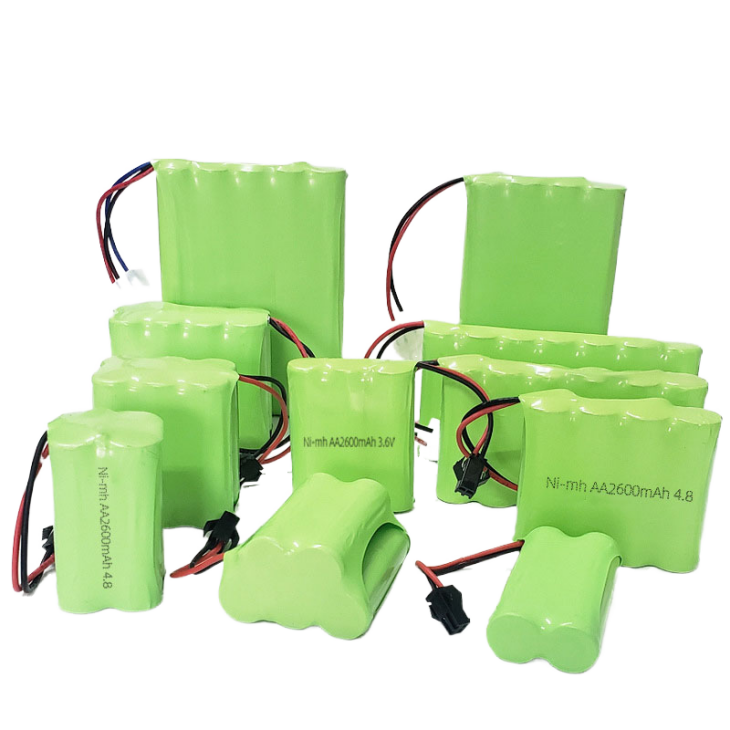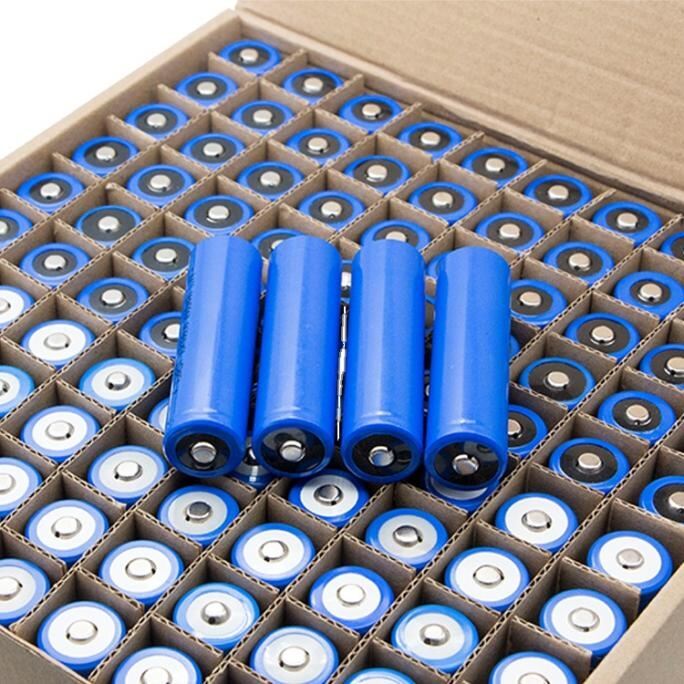Nickel-Cadmium (Ni-Cd) Batteries
Durability and Extreme Temperature Performance
Nickel-cadmium batteries have long been recognized for their robustness and reliability. They can operate stably across a wide temperature range and under harsh working conditions, making them a mainstay in aerospace, military, and certain industrial applications---where durability is just as important as capacity. They can withstand shock, vibration, and rapid charge--discharge cycles, continuing to perform even in environments where other battery chemistries would struggle.
Cycle Life and Discharge Capability
Ni-Cd batteries typically support 700 to 1,000 charge--discharge cycles, depending on usage and discharge depth. They tolerate deep discharges better than most other chemistries, which historically made them ideal for tools, emergency power systems, and mission-critical equipment. In situations with limited or irregular charging opportunities, this durability translates directly into long-term reliability.
Memory Effect and Partial Recovery
A well-known drawback of Ni-Cd batteries is the memory effect---when recharged after partial discharge, the battery gradually "adapts" to a reduced effective capacity. This led to certain maintenance practices, such as performing full discharge cycles and occasional reconditioning charges to restore capacity. Modern battery management systems can mitigate but not completely eliminate this effect. For users, this means planning maintenance schedules throughout the battery's lifespan to prevent unexpected capacity loss.
Nickel-Metal Hydride (Ni-MH) Batteries
Capacity and Weight Considerations
Ni-MH batteries offer higher capacity than Ni-Cd batteries, though still lower than lithium-ion batteries. They strike a good balance between energy content and cost, making them suitable for consumer electronics, power tools, and certain automotive applications. However, they are heavier---roughly twice the weight of Ni-Cd batteries for the same energy storage---which can affect ergonomics and energy efficiency in portable devices.

Temperature Range and Usability
Ni-MH batteries operate well across a moderate temperature range. They perform reliably under normal environmental conditions but are less resistant to extreme temperatures than Ni-Cd batteries. Their optimal range is typically 5°F to 95°F (−15°C to 35°C), beyond which capacity and performance may decline. In winter or highly fluctuating environments, this can affect runtime and performance stability.
Cycle Life and Discharge Behavior
Ni-MH batteries generally provide 500 to 800 cycles, with strong performance under moderate to deep discharge. They are a reliable option for devices that require medium to high cycle life without the extreme ruggedness of Ni-Cd batteries. As with other chemistries, discharge depth and charging habits influence long-term performance.
Weak Cell Syndrome and Safety Characteristics
A potential issue with Ni-MH batteries is "weak cell syndrome", where some cells in a pack age faster than others, reducing total capacity and runtime. Mitigation measures include proper pack design, balanced charging, and effective thermal management. Ni-MH batteries are generally safer and more environmentally friendly than Ni-Cd batteries, as they do not contain toxic cadmium. Their lower environmental impact makes them a more sustainable choice in many consumer and industrial applications.
Widespread Manufacturing and Supply
Ni-MH batteries benefit from a mature manufacturing base and ample supply, helping to maintain stable pricing and availability in consumer electronics, power tools, and automotive sectors. A strong supply chain ensures predictable sourcing, spare parts, and after-sales service---crucial for large-scale deployments or replacing older equipment.

Lithium-Ion (Li-Ion) Batteries
Energy Density and Use Cases
In areas where high energy density and lightweight design are essential, lithium-ion batteries dominate. They store significantly more energy per unit weight than Ni-Cd or Ni-MH batteries, making them the top choice for portable electronics, electric vehicles, renewable energy storage, and other applications requiring long runtime and compact size. Their high energy density allows for lighter, thinner devices, longer operation time, and more efficient system design.

Memory Effect and Deep Discharge Suitability
Lithium-ion batteries have no memory effect, making them suitable for various deep-discharge scenarios. Their chemistry supports efficient, high-performance charge--discharge cycles, enabling compact and reliable systems with fewer limitations compared to traditional battery types. This advantage is a key reason for lithium-ion's widespread use in modern electronics and transportation.
Low-Temperature Performance and Capacity
A clear drawback of lithium-ion batteries is their poor low-temperature performance---capacity and efficiency drop significantly in cold conditions.
Each battery type has unique strengths suited to different applications.
There is no absolute "best" battery, but rather the most appropriate one depending on your performance needs, environment, and budget.
This article compares Ni-Cd, Ni-MH, and Li-ion batteries, highlighting their strengths and weaknesses in energy density, durability, temperature tolerance, and sustainability. It helps users choose the most suitable battery type for their specific applications, from industrial and automotive uses to modern portable electronics.



